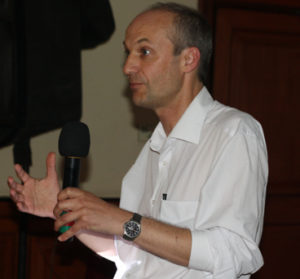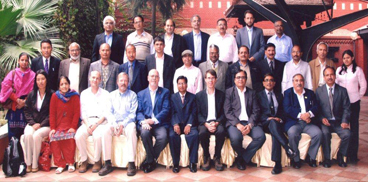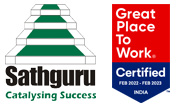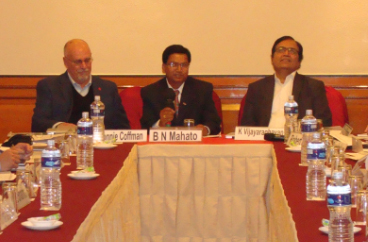Over two days on 2 and 3 November 2011, delegates from the SAARC member involved in the Durable Rust Resistance in Wheat (DRRW) project gathered at the Hotel Radisson in Kathmandu, Nepal to discuss the progress and issues involved in the multilateral efforts to monitor and mitigate the spread of the potentially devastating Ug99 race of wheat rust. The DRRW project under the aegis of the Borlaug Global Rust Initiative is funded by the Bill and Melinda Gates foundation and is coordinated by the College of Agriculture and Life Sciences, Cornell University, Ithaca, NY with Sathguru Management Consultants functioning as South Asia coordinator.
The meeting on “Strategic Planning for Surveillance Activities in South Asia” saw the participation of delegates from Afghanistan, Bhutan, India and Pakistan apart from the host country Nepal. The sessions at the two day meet were chaired variously by Dr. Ronnie Coffman of Cornell University, Dr. Robert Park of the University of Sydney and Dr. Dave Hodson of CIMMYT (International Maize and Wheat Improvement Center).
Dr. B. N. Mahato delivers his keynote address
The welcome address by K. Vijayaraghavan, CEO of Sathguru, was followed by a key note address from Dr. B. N. Mahato, Director for Planning and Coordination at the Nepal Agricultural Research Centre. Dr. Mahato provided a brief history of the work carried out on wheat in the country. Speaking of the presence of Barberry in Nepal and its role in serving as a host to the rust pathogen, Dr. Mahato emphasized the importance of good strategic planning for to ensure effective surveillance and combating of wheat rust. This was followed by the technical sessions chaired by Dr. Ronnie Coffman, Dr. Robert Park and Dr. Dave Hodson.
During the first session, with Dr. Park in the chair, the delegates from SAARC provided country wise reports on the wheat growing patterns, surveillance data, data collection and analysis protocols in their respective countries.
The second session featured presentations from Dr. Park and Dr. Hodson. Dr. Park elaborated on the pathology of the rust pathogen and the importance of seeking and establishing effective protocols for rust control. Dr. Hodson stressed the need for effective global monitoring of wheat rust and showcased an online data collection and management system called rustspore.org. These presentations were followed by discussions on how the suggestions could be effectively put into practice in the various SAARC countries. He also emphasised the importance of following a standardized format for collecting and presenting information from field surveys that would be shared among the stake holders to ensure consistency and comprehensiveness of the data.

The third and fourth sessions on the following day were devoted to discussions on the effective collection and sharing of the data on wheat rust collected by the member countries and its incorporation into the central repository, the revival of the SAARC nursery and the close monitoring and study of rust in barberry and other related species.
Much was achieved over the one and half days of presentations and intense follow up discussions towards the establishment of effective monitoring and mitigation protocols for wheat rust. There is immense confidence that the Ug99 pandemic can be effectively controlled through multilateral efforts towards a common goal.



